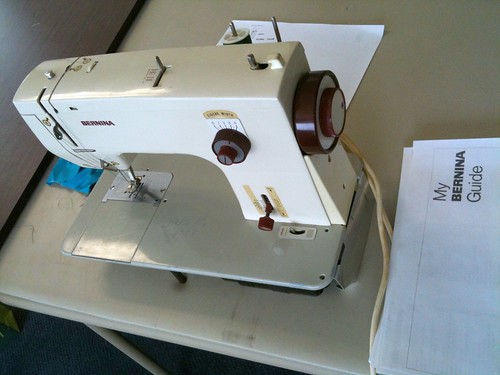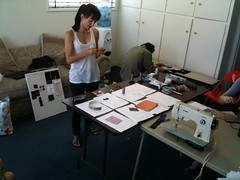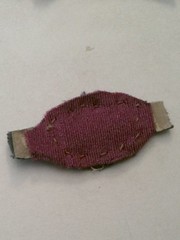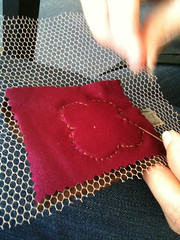Electronic Textiles & Soft Sensors Workshop Recap
Last Sunday’s Soft Sensors Workshop was a lot fun. We learned about several different kinds of materials and threads, various ways to make input devices for electronics, and even made a few of our own sensors.
On the left is a small fabric switch made during the class from three layers of fabric, with adhesive conductive fabric as the switch parts. On the right is being made a 4-position pressure switch in the shape of a flower.
Also, CRASH Space now has a sewing machine! Syuzi helped us acquire it. It’s a Bernini with a strong motor that’s good at sewing conducdtive threads (which are typically thicker than normal)

Some things we learned in the workshop:
General Fabric Hacking
- You need multimeters & alligator clips to hack the fabrics. Just wires and hook jumpers aren’t good enough to get good purchase on the fabric & thread.
- A good starter kit of wearable tech is : http://www.aniomagic.com/
Conductive Thread
- Thread is rated by its conductivity rating, often in ohms/foot.
- The more silver a thread has, the more conductive it is, making it a better wire
- Highly resistive thread can be used as resistors for LEDs, etc.
- For machine sewing, conductive thread goes in bottom bobbin, not on top spool. Otherwise it breaks or jams machine.
- When hand sewing, use single thread, not double, by way of a “bookbinder’s knot”
- Also when hand sewing, don’t do finish up with big knot at end, a small one will do
- Sparkfun 2-ply thread isn’t so good, it frays.
Fabrics
- Some conductive cloth is more conductive along one dimension. Test it out to see which way is which.
- Some fabrics can be etched like circuit boards
- Resistive fabric is pressure-sensitive, can be used as sensor
- Stretch/ Spandex-like conductive fabric changes resistivity slightly when stretched
- Tulle netting is useful as padding between conductive fabrics, acting like an insulator until pressed.





best crash space event EVAR!!!